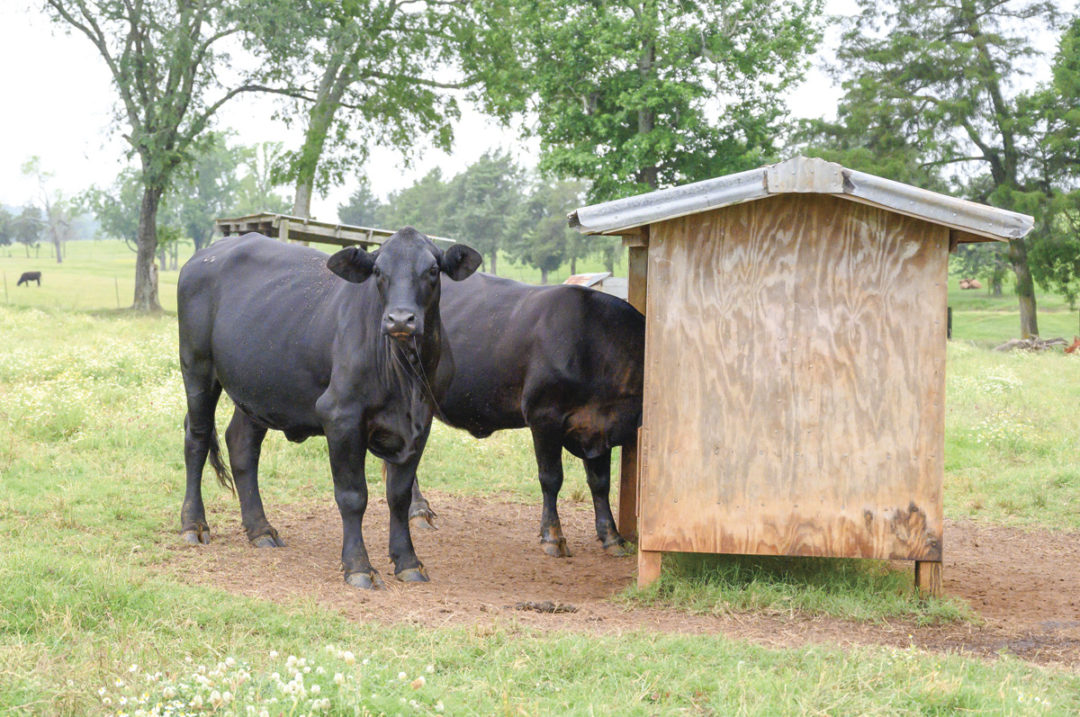Horn flies are a nuisance to cattle performance and a burden on producers’ bottom lines. Each year, lost production caused by horn flies costs the cattle industry approximately $1 billion, and in today’s market, reducing preventable profit loss is key.
Horn flies are the predominant fly species on pasture cattle. A horn fly takes numerous blood meals throughout the day, which directly correlates to decreased cattle performance. They can also cause health issues, such as mastitis, because they tend to target the bellies of cattle.
Break the cycle
Several methods can be implemented to control the spread of horn flies. One of the simplest and most effective is a feed-through fly control added to mineral.
Feed-through fly control utilizes an insect growth regulator (IGR) that passes through the animal when consumed with mineral and is eventually deposited in manure. The horn flies then lay their eggs in fresh manure, and the IGR stops the development of the pupae into adult flies. It’s important to note that the IGR doesn’t kill adult flies. It stops the development of the pupae into the adult life stage, effectively breaking the horn fly life cycle.
Consistent consumption
A key to successfully using feed-through fly control is ensuring cattle consistently consume mineral. If cattle aren’t eating the mineral, they’ll never receive the proper amount of IGR to break the horn fly life cycle.
The first step is to choose a mineral that encourages consistent consumption and is balanced for your herd’s needs. Cattle crave two minerals: salt and phosphorus. Cattle eat about an ounce of salt a day. Phosphorus needs are typically driven by the forages cattle consume. No matter what, ensure cattle receive the appropriate levels of bioavailable, essential vitamins and minerals. Balance salt and phosphorus to meet the needs of your herd while driving the intake of all essential minerals and vitamins.
Weatherization also plays a role in whether cattle will consistently consume mineral. When mineral gets wet, it sometimes has an “off” flavor or odor that can decrease palatability. Wet mineral tends to brick up, which is harder for cattle to consume. Remember, the most expensive mineral is the kind they can’t or won’t eat. A weatherized mineral should maintain its integrity when wet and have a large enough particle size to not blow out of the feeder.
Another strategy to optimize mineral intake is providing adequate access to water. Water has been shown to drive mineral intake, especially during the summer. During warmer weather, place your mineral feeders in loafing areas of pastures and adjacent to water sources, so cattle will still spread out to graze.
Fly control timing
Ideally, put out fly control mineral 30 days prior to the last frost in the spring. Once temperatures average 65°F, horn fly eggs start developing and hatching. Having fly control mineral available 30 days before gives the IGR time to work and help curb the development of horn flies.
Even if you miss that window of time, you can still utilize feed-through fly control. The horn fly life cycle is approximately 30 days, so you can still get effective horn fly control as the weather warms up.
Keeping feed-through fly control out long enough is crucial. Fly control mineral should be fed into the fall, at least 30 days following the first frost. Feeding this long helps prevent the overwintering of the horn flies. Then, your next spring’s horn fly populations will be reduced because you got a head start in the fall.
More methods, more fly control
Unfortunately, fly control isn’t as simple as one method. Proper fly control strategies are most sound when you adopt multiple methods. Whether that be fly tags, pour-ons, dust bags or oilers, they all have a purpose. Some of those also help control other fly species that can irritate your cattle.
For instance, a feed-through fly control mineral that helps reduce horn flies can be paired with dust bags or oilers hung near a mineral feeding site to help with face fly and stable fly control. As long as you’re not decreasing mineral intake using those devices, they can be an excellent option for an integrated pest management approach.
A fly control mineral can be a simple and effective solution to help keep horn fly populations down and address a parasite that causes significant financial impacts. Consistent consumption is critical, so it must be a well-balanced, palatable mineral. Give your entire fly control program a lift using an integrated pest management approach that includes feed-through fly control and other tactics that will positively impact the whole herd and your bottom line.












